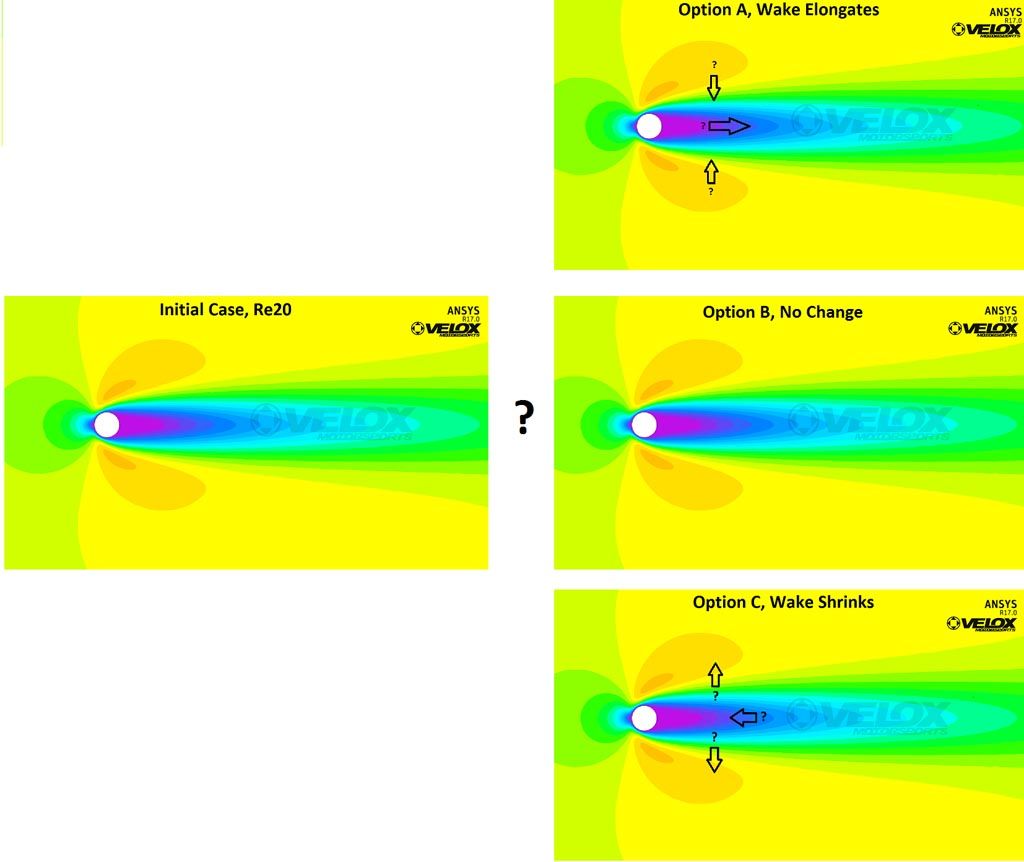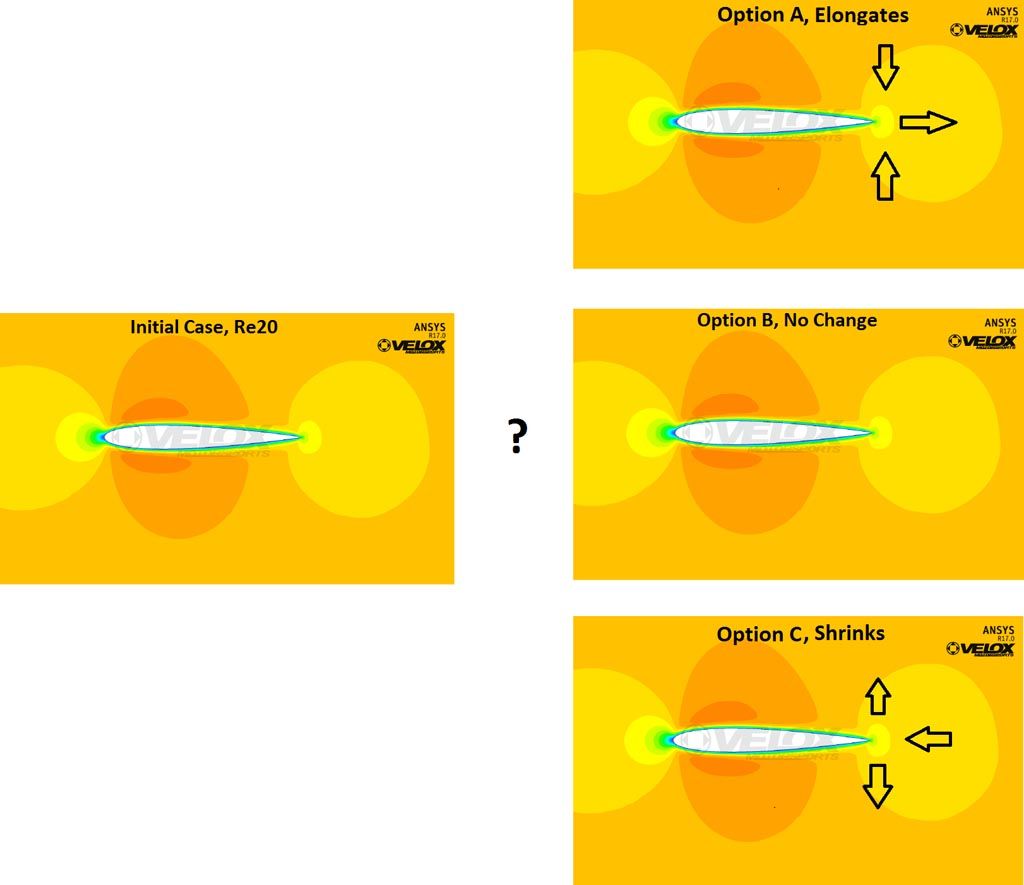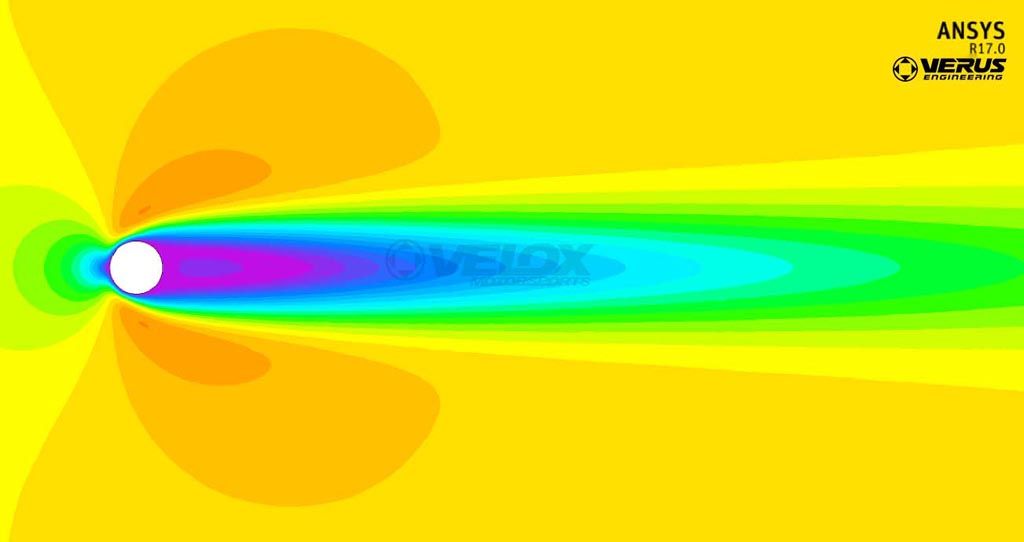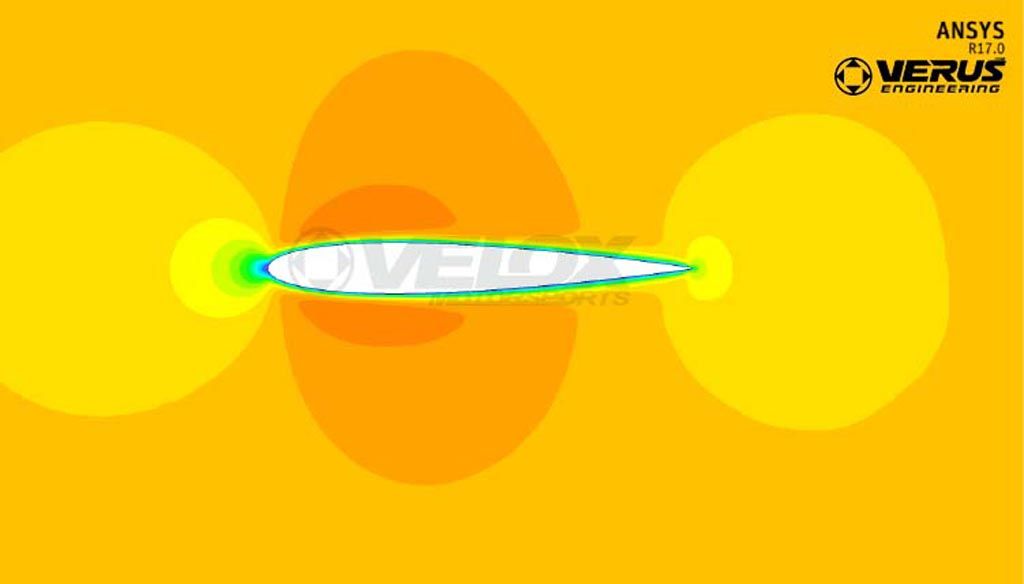We want to start this blog post with two images and a question. We have placed a ball and an airfoil, in a tube. The tube's walls do not interfere with the objects flow field. We are flowing air at a speed that has turbulence of Re20. This is very much laminar flow, which is defined as anything under Re2000. We then increase the airspeed so that the turbulence increases to Re40. Double that of the initial case, yet still very much laminar.
QUESTION: What happens to the wake region when we double
Option A: The object’s wake increases in length, decreases in height.
Option B: The object’s wake does not change.
Option C: The objects wake decreases in length, increases in height.
Ball Image

Airfoil Image

Ball Answer: The correct answer is A, the wake will elongate and thin out at Re40.

Airfoil Answer: The correct answer is B, the wake will not change.

Let’s take it a step further, to Re680. Still laminar, but 32x's the original turbulence. What will happen?
The ball’s flow field is unsteady and waving around like a flag! Pretty radical.
The airfoil’s flow field barely changes even at 32x’s the original turbulence, pretty impressive!
Typical Answers:
We asked these questions to educated individuals and engineers. On average, most got the ball answer correct, the airfoil answer incorrect, and no one could guess what happened at Re680.
We get asked often, why is CFD Analysis Important? What are you accomplishing?
This is a great example of why CFD analysis can be extremely important! Intuition can only get us so far. Even as engineers, intuition can sometimes lead us astray, in the opposite direction even! Air is invisible and as
Conclusion:
Our main point of this, hopefully, short and informative,
Why is CFD Analysis Important?